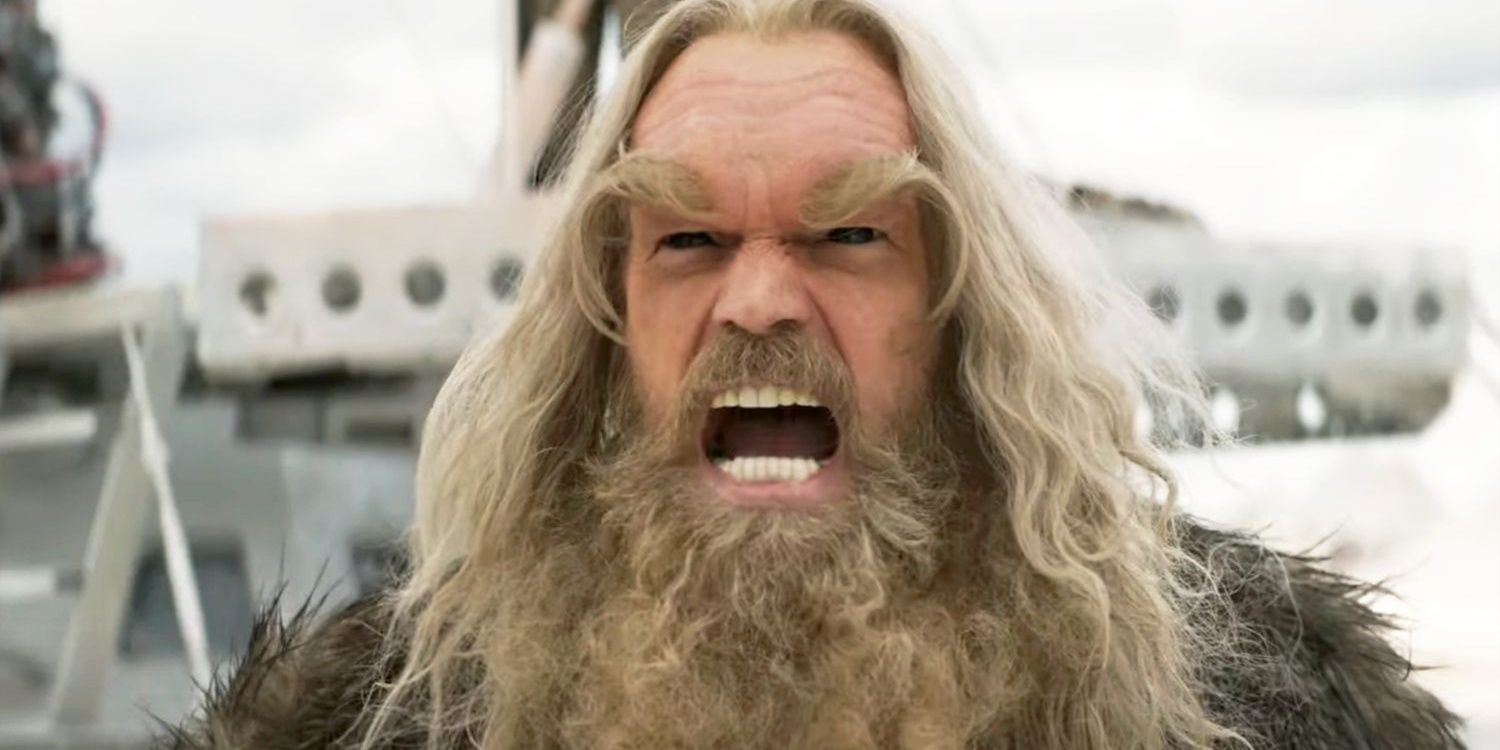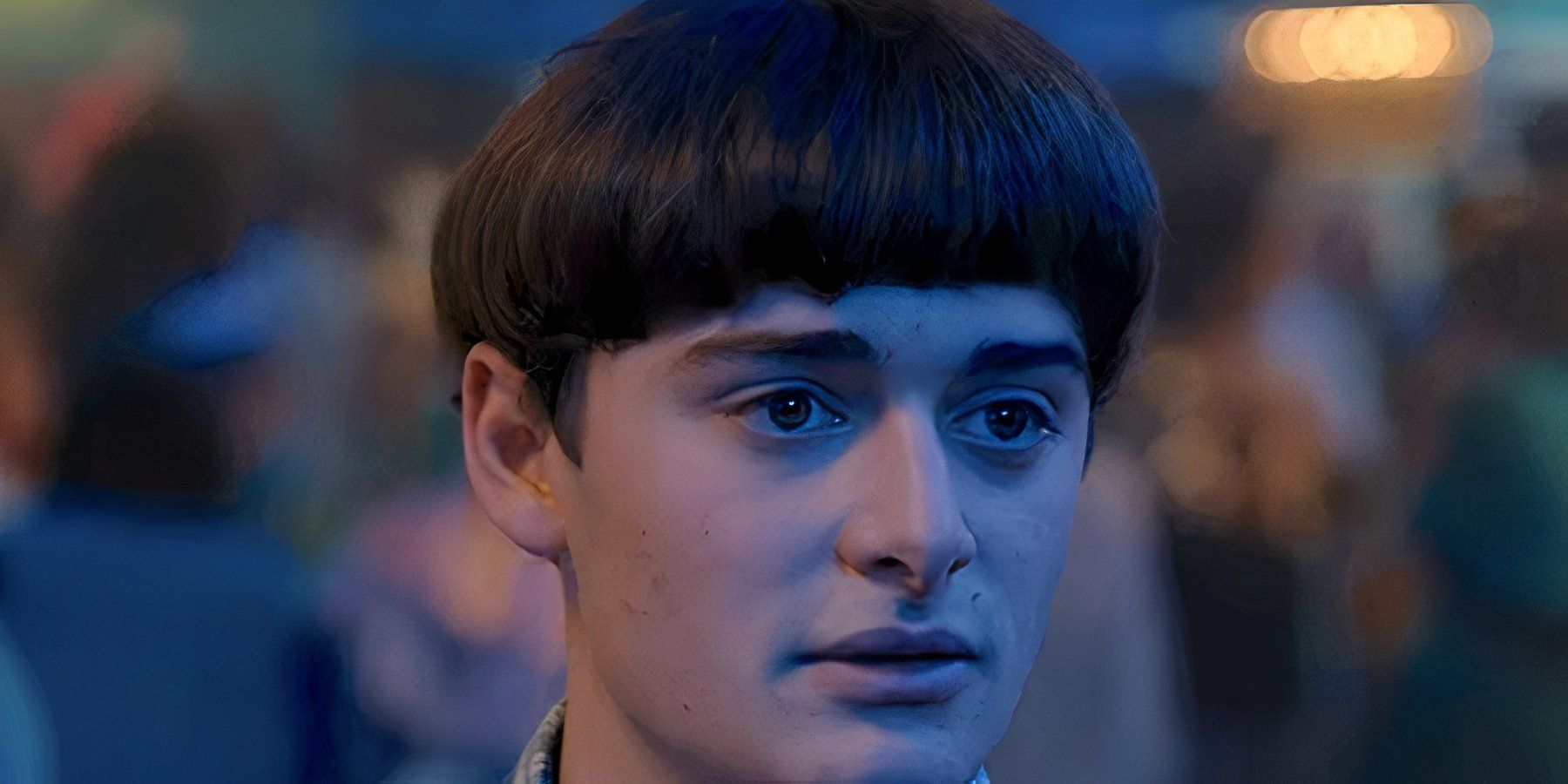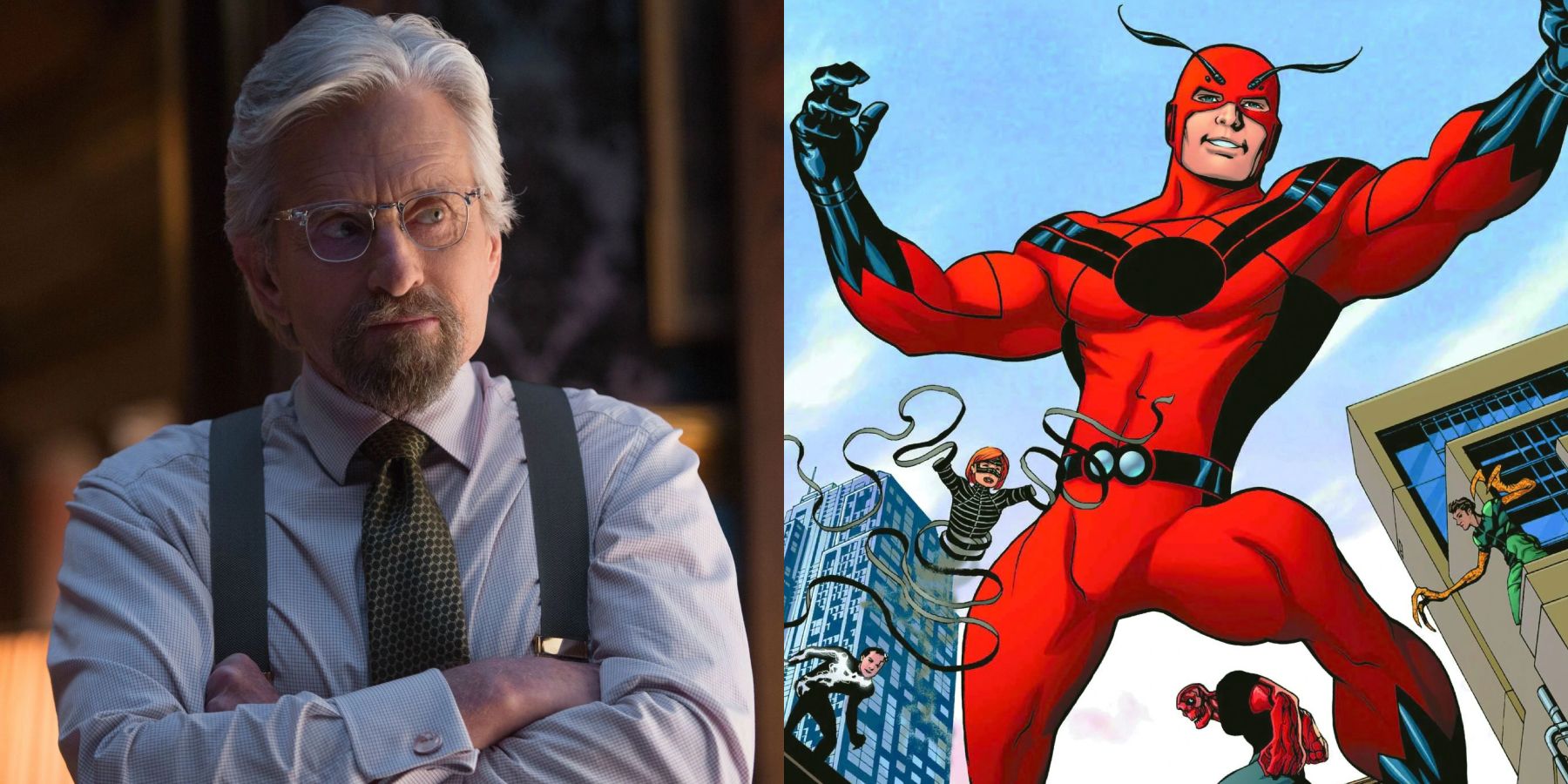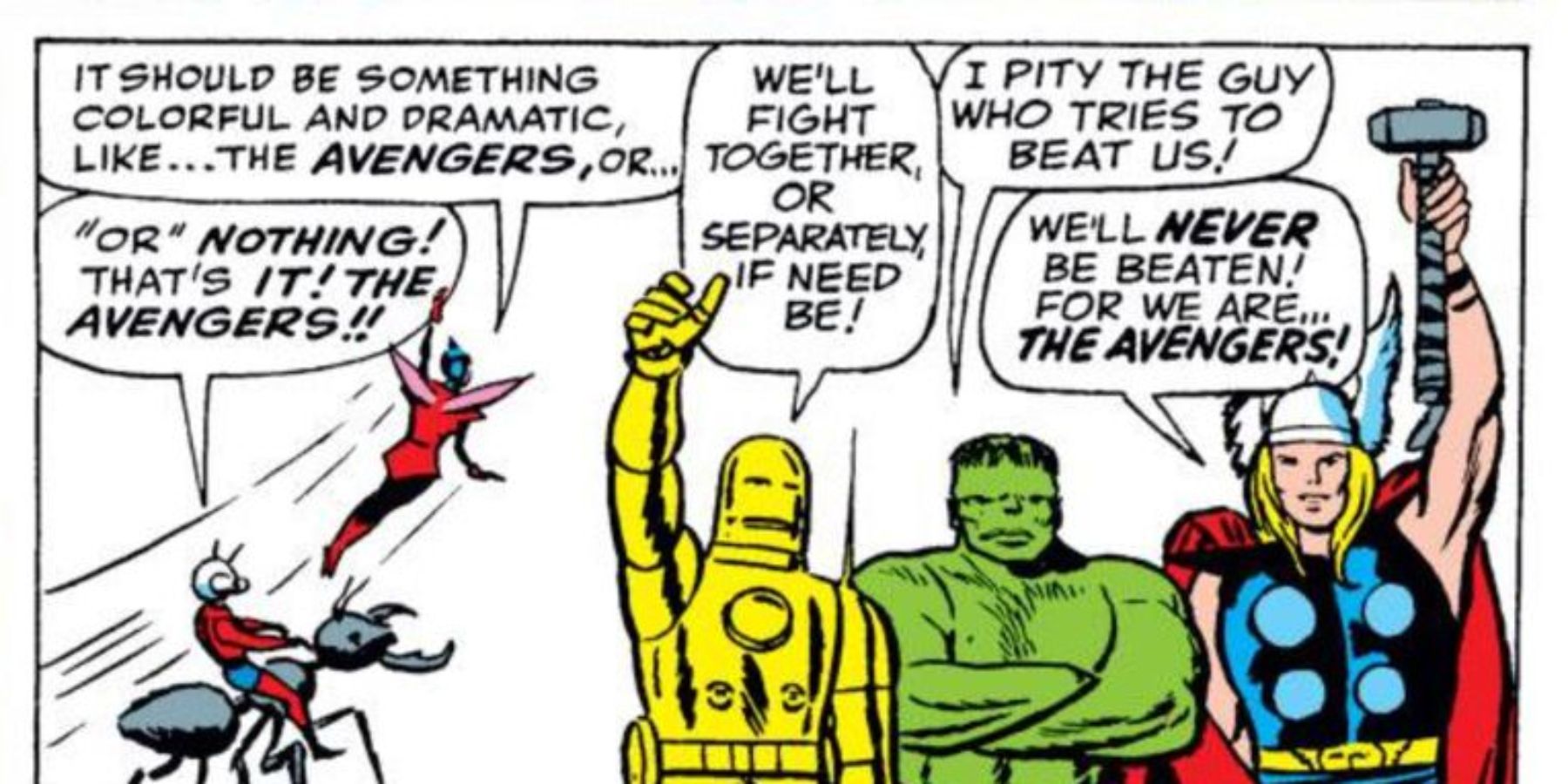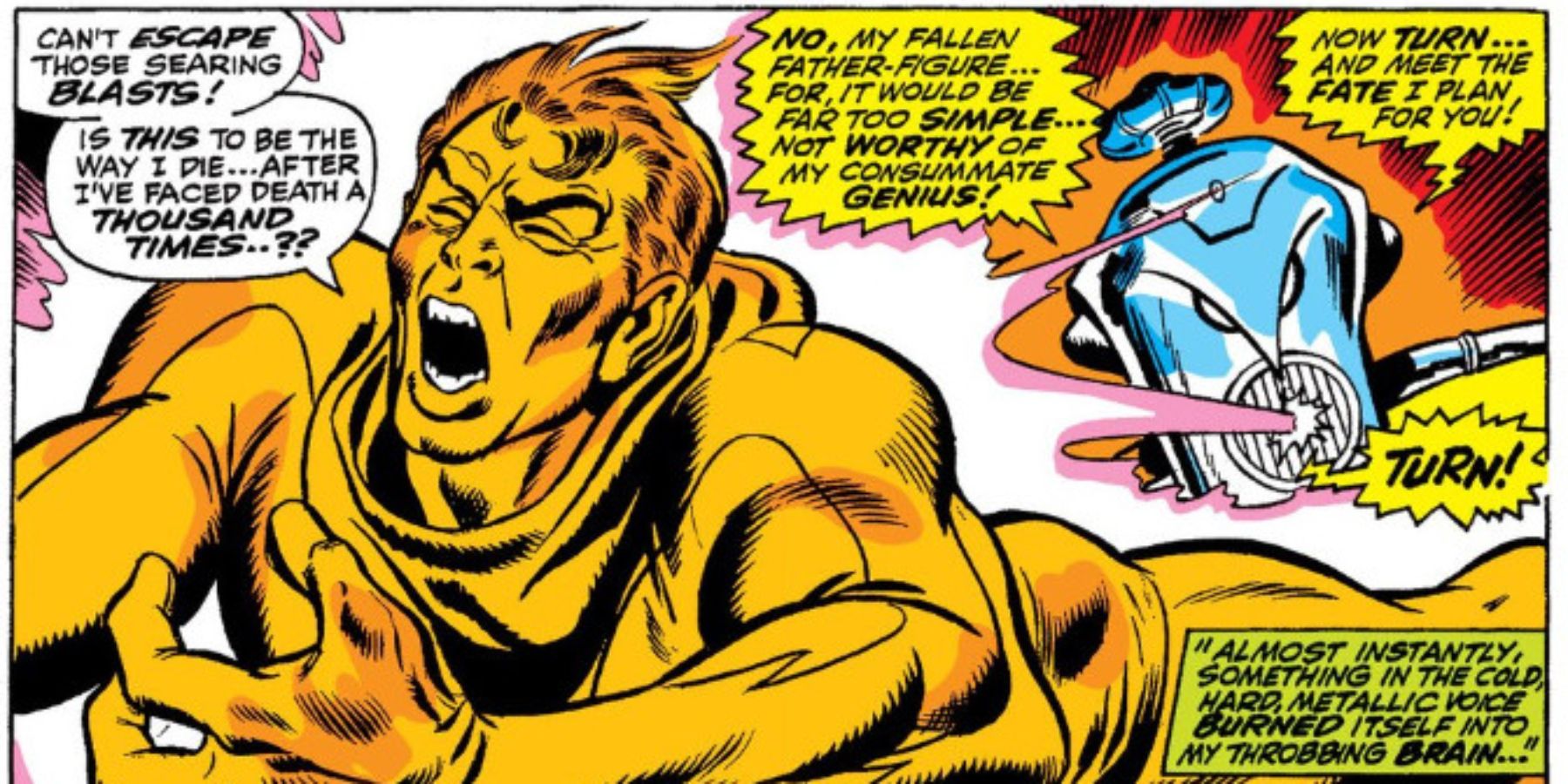Ever since the original Ant-Man film in 2015 — nearly eight years ago, at this point — Scott Lang (played by Paul Rudd) has been the Ant-Man of the Marvel Cinematic Universe. He’s been the main character of every Ant-Man film, including the newly released Ant-Man and the Wasp: Quantumania, and he even joined the Avengers in Avengers: Endgame.
However, while Scott Lang may be the most prominent bearer of the Ant-Man name in the MCU, that’s far from the case in the comics — it’s been decades since he last held the mantle, but Hank Pym remains the most important Marvel Comics character to ever use the Ant-Man identity. Of course, any MCU fan would be forgiven for not guessing that based on Pym’s movie appearances, as his live action counterpart (as portrayed by Michael Douglas) bears little resemblance to the Hank Pym of the source material. So without further ado, here’s a brief summary of how the original comic book Hank Pym differs from his MCU adaptation.
Hank Pym Was a Founding Avenger
In the MCU, the original six Avengers are Captain America, Iron Man, Thor, Hulk, Black Widow, and Hawkeye. And indeed, this lineup is mostly comic-accurate: Iron Man, Thor, and Hulk were all present in Avengers #1 back in 1963, with Captain America soon joining them in issue #4. However, instead of Hawkeye and Black Widow, it was Hank Pym and Janet Van Dyne who were part of the original Avengers team in the comics. And while the MCU retains their status as the original Ant-Man and Wasp, Pym and Van Dyne have no ties to the Avengers in the movies.
Indeed, despite their status as founding Avengers in the comics, Ant-Man and the Wasp are nowhere to be found in the Avengers movies until Endgame — and even then, it’s Scott Lang and Hope Van Dyne who aid in the final battle against Thanos. Hank and Janet, despite their crucial places in Avengers history, were nowhere to be found. Not only does this change drastically diminish Hank and Janet’s importance to the MCU compared to their comic counterparts, it also heavily alters Pym’s characterization.
In the comics, Hank Pym is a tragic figure, defined by an insecurity that he can never truly overcome. Ever since his early days as an Avenger, he’s been plagued by feelings of inadequacy and self-doubt. He feels inferior to his teammates, and thus tries to constantly reinvent himself in order to earn approval from his peers. From Giant-Man to Goliath to Yellowjacket, Hank continually devised increasingly powerful personas in order to become a strong, manly hero like his teammates. Time and time again, he reshaped his identity to align with the person he believed others — especially Janet — wanted him to be.
Over time, Pym’s mental health continued to deteriorate as he struggled to keep up with his teammates. He went from insecure and self-loathing to bitter and paranoid. At his lowest point, in a famous 1980s storyline, he attacked a surrendering supervillain out of fear, causing him to be court-martialed by his teammates. Pym stubbornly doubles down, refusing to admit fault, and even devises a fake robot attack in a harebrained attempt to prove his value to the team. But in the end, it’s Pym’s desperate craving for validation that destroys his teammates’ trust in him. The arc ends on a bleak note, with Pym being expelled from the Avengers and divorced by Janet.
Hank Pym Created Ultron
In later stories, Pym made amends with the Avengers and eventually rejoined the team, but his resentment towards his teammates still lingered. No matter how hard Pym tries to play the hero, there’s always a darkness hiding beneath the surface. And nowhere is that more apparent than in his relationship with his “son” — the Avengers’ greatest enemy, the genocidal robot known as Ultron.
In the MCU, the role of Ultron’s creator famously went to Tony Stark. But in the comics, Ultron is Hank Pym’s brainchild. Literally, in fact: Ultron’s AI is based on Pym’s own mind, making him both a child and a dark reflection of his creator. The best Ultron stories are the ones that recognize that his villainy is the result of Pym’s own flaws, magnified to apocalyptic levels. In the 2015 graphic novel Avengers: Rage of Ultron by Rick Remender and Jerome Opeña, Ultron declares that he is the manifestation of Pym’s own repressed misanthropy — his long-simmering hatred for both humanity and himself.
Ultron’s existence is the crime that Pym will never be able to forgive himself for. Not just because of how Ultron’s cruelty reflects his own worst impulses, but because by building Ultron in the first place, Pym enabled the countless atrocities he’s committed as a result. The Hank Pym of the comics is a broken, traumatized mess of a man consumed by guilt, insecurity, and resentment. He keeps striving to be better, to be a hero on par with his fellow founding Avengers, yet he always seems to fall short of the mark. Certainly a far cry from the curmudgeon with a heart of gold who mentors Scott Lang in the MCU.
Certainly, Michael Douglas does his best with the material he’s given. His bitterness towards SHIELD, protectiveness towards Hope, and his desperation to save Janet come close to capturing some fraction of the nuance possessed by the comic book Pym. But by removing so much of his backstory from the MCU, Pym’s live action counterpart is left without much to work with. So much of Pym’s complex, deeply flawed, and deeply human characterization comes as a direct result of his relationships with the Avengers and Ultron. And when those relationships are omitted from the adaptation, the resulting character can’t help but fall short of his full potential. Without the rich, messy history of his comic counterpart, it’s no surprise that the MCU’s Hank Pym hasn’t caught on as a fan favorite.

